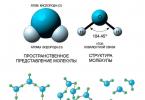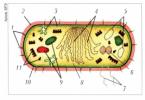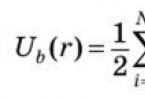Water is a substance that can be observed in three states of aggregation. It can freeze and be solid ice, it comes in liquid form, and it is also present in the form of steam - not only in the bathhouse, but also in the sky, in the form of clouds. However, within the framework of this article, we will focus on its first state, solid.
Water freezes to form solid ice crystals. Ice can form many kilometers of surfaces, covering rivers, lakes and other bodies of water. At the same time, it turns out to be lighter than liquid water and is always on top. Water freezes due to lower temperatures.
Temperatures and state of aggregation of substances

The higher the temperature, the further apart the molecules of any substances are. Their distance from each other leads to a softening of the substance, which first becomes liquid and then completely gaseous. This process can be seen in the example of iron, which is melted in a crucible and takes on a liquid form. With a strong increase in temperature, it can also become gaseous, that is, evaporate, but for this the temperature must be really high.
Water at normal room temperature is a liquid. As temperatures rise, it will become steam, and as temperatures fall, it will become ice. After all, lowering the temperature has the opposite effect on the molecules - they move closer together. And when they come closer, the substance becomes harder and denser. The same effect can be achieved by mechanical pressing of any substance - it will become harder, again due to the proximity of the molecules.
Interesting:
Why does sugar dissolve?
What happens when temperatures drop?
When water is exposed to cold temperatures, the molecules move closer together, forming hexagonal shapes. Of course, these are snowflakes, which are water crystals. Cooling of water and its crystallization are actually synonyms that describe the same process. Water begins to crystallize at a temperature of 0 degrees - it is this moment that is taken as zero on the Celsius scale. If we consider the American Fahrenheit scale, then water solidification will occur at 32 degrees.
But to create water crystals, you need a base, some impurities or suspensions, thanks to which this process starts. And if the water is absolutely clean, a slightly different phenomenon is observed here - sometimes it freezes only at -40 degrees, and at zero and other not too low levels it remains liquid. However, it does not freeze only in a calm state. If you shake it at sub-zero temperatures, it will immediately turn into ice.
There are many paradoxes associated with water. And in addition to the nuance already described above, it should be noted that ice takes up more volume than liquid water, that is, when freezing, this substance expands, while others, on the contrary, take up less volume at low temperatures. It is with the expansion of water during the formation of ice that the bursting of barrels, pipes and other objects left filled with water for the winter is associated.
At the moment of freezing, the molecules move slightly away from each other, which gives this effect. And it is this factor, along with frozen air bubbles, that makes the ice buoyant. If it sank or formed from the bottom, not a single living creature in the reservoirs would be able to survive the winter. But by forming on the surface and remaining there, ice, on the contrary, retains the heat of the water and performs a protective function in winter, giving animals, plants and fish the opportunity to overwinter and survive.
With the onset of cold weather, a thin crust of ice forms on the surface of the lakes, which is a consequence of the water temperature dropping to negative values. But in winter, when the air temperature drops below 30 degrees below zero, an impressive layer of ice forms on the surface of the lakes, but large lakes never freeze completely. Why is this happening?
It turns out that when water temperatures begin to drop, very interesting things happen in closed bodies of water. Fresh water, due to its unique molecular structure, has its maximum density at a temperature of +4ºС. And when the water temperature continues to drop, layers with different temperatures separate in the lake, forming a seasonal thermocline.

Water with a temperature of +1-2°C is always lighter than a layer of water with a temperature of +4°C, which is located at the bottom. Due to the weak circulation of water masses (and we remember that this is not a river, but a deep lake), active mixing and equalization of temperature does not occur. For this reason, water with a temperature of about +4 degrees is always located in the lower part of the reservoir. The gradually growing layer of ice and colder water in the upper part of the reservoir prevent the lake from freezing to the bottom. Fish and other aquatic life continue to live in the lake without fear of turning into a piece of ice.

Of course, this rule does not work for small lakes, and with the arrival of negative temperatures they can freeze to the bottom. Prudent fish, as a rule, leave such dangerous wintering places in advance and go into rivers or neighboring deeper lakes.
The thirties of the last century were the time of Gogol’s most fruitful and intense creative flowering. Following “Evenings”, “Mirgorod”, “Arabesques”, he turns to drama and creates one of the most remarkable works of world literature - the immortal “The Inspector General”. In this comedy, the bureaucratic-bureaucratic Russia, the police-autocratic system based on veneration, bribery, abuse and oppression are put to shame. According to the writer himself, he “decided to collect in one pile everything bad in Russia... all the injustices that are done in those places and in those cases where justice is most required from a person, and at once laugh at everything.”
The course of the play itself is constructed in a unique and new way. Khlestakov does not appear in the first act yet. But the whole atmosphere of fear of expectation, fear that unseemly deeds and abuses of the mayor and other officials will be revealed, determine the further development of the action, the possibility of a future mistake. “With what power, with what simplicity, with what ingenious economy the plot of the play occurs!” - wrote the famous theater figure V.I. Nemirovich-Danchenko. The plot of “The Inspector General” is already given in the first phrase: “I invited you, gentlemen, in order to tell you the most unpleasant news: an auditor is coming to us.” And already this phrase gives the main impetus to the whole action - the emergence of fear, which darkened the mayor’s mind. Behind the comic, almost vaudeville plot in "The Inspector General" there is always an unsightly and harsh reality, one can feel the dramatic tension, which was so sharply reflected in the finale, in the "silent scene". The comic effect is based on a "misunderstanding". Each of the characters, under the influence of fear, misinterprets the words of the other. And so throughout comedy: lies are taken as truth, and truth as lies. Not only Khlestakov lies uncontrollably, both the mayor and Zemlyanika lie recklessly, trying to present themselves and the matter “entrusted” to their supervision in the best possible way. Khlestakov for them personified the punishing “fate”, retribution for all their unjust, self-interested activities, and they pretend, dodge , lie.In the mayor's house, Khlestakov's character is revealed in full. He takes care of both the daughter and the mayor’s wife, is declared Marya Antonovna’s fiancé and disappears as quickly as he appeared. “Khlestakov’s character,” Belinsky will say, “...is fully developed, revealed to the last semblance of its microscopic pettiness and gigantic vulgarity.”Behind the condemnation and merciless ridicule of the world of mayors and Khlestakovs, all the evil spirits of official rogues and empty scoundrels, there is Gogol’s positive ideal, which has not yet received concrete expression, representing only a dream of a fair and reasonable structure of society.Gogol did not bring out a “positive hero” in his comedy. He wrote in “Theatrical Travel”: “Yes. If at least one honest person were placed in a comedy and placed with all the fascination, then every single one would go over to the side of this honest person and would completely forget about those who frightened them so much.” Now". The positive beginning in “The Inspector General” is laughter, which embodies that high moral and social ideal, and is that “honest face” that determines the meaning of comedy.“Laughter” in “The Inspector General” is imbued with faith in the “bright nature of man”, in the spiritual forces of the people, opposing those forces of social stagnation, soullessness, selfishness, which are embodied in a comic and ugly form in the characters of the play. “Silent Scene”, completing the comic action tragic ending, affirms the triumph of “justice”, the triumph of the highest moral principle.




